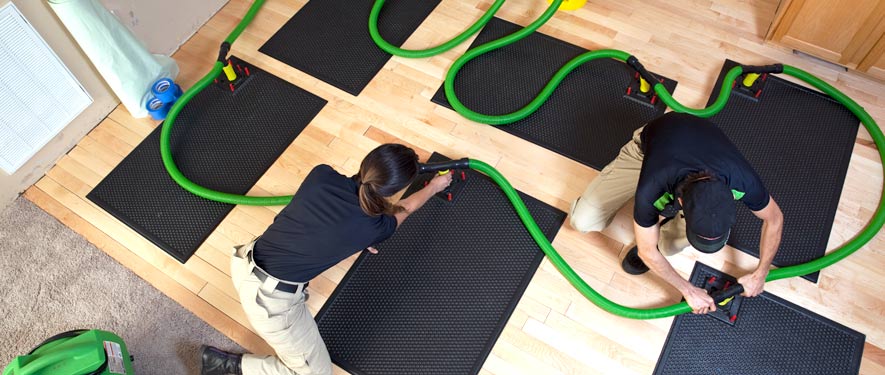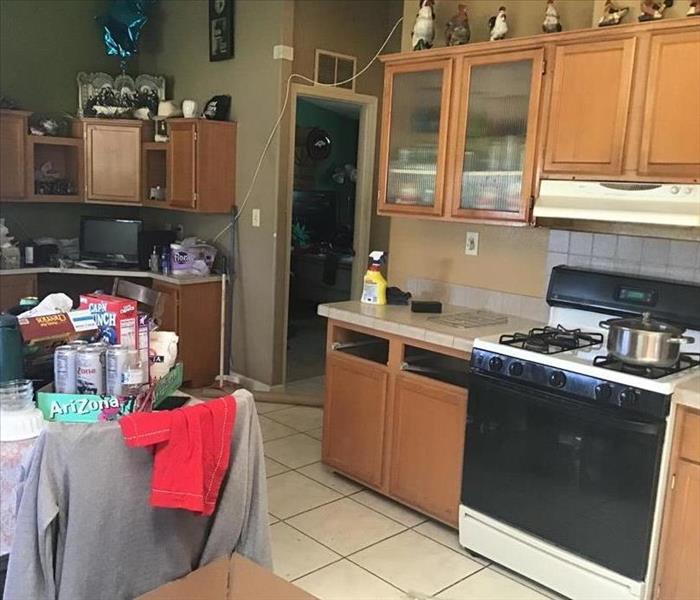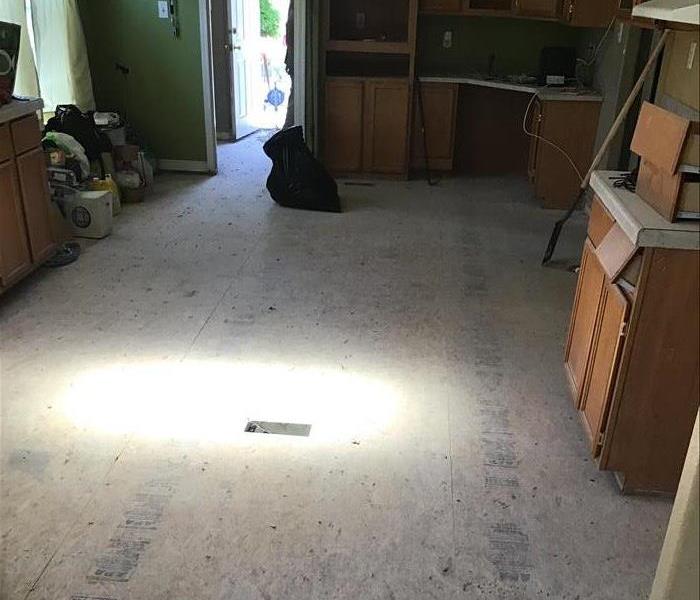
Step 4: Drying and Dehumidification
Our Water Damage Restoration Process
Once the excess water has been removed from property the floors and walls may appear dry. Our technicians go above and beyond to inspect and are aware that in some cases floors and walls may still be wet. Carefully monitoring these affected areas each and every day, determining the optimal number of air movers and dehumidifiers to dry your home or business to assure proper drying procedures are being conducted, is what we do. Nearly all building materials, like wood, drywall, and flooring materials, are porous and therefore retain water. Retainment of water can cause the materials to break down, warp, or cause mold damage.
Drying / Dehumidification
Our Professionals will use room measurements, temperature, and relative humidity to determine the optimal number of air movers and dehumidifiers to dry your home or business. We’ll carefully monitor the progress using moisture meters until the materials return to acceptable drying goals.
- Use Dehumidification Equipment
- Use Monitoring Equipment to Track Progress
Monitor Floor and Walls
We check the moisture levels to monitor the drying process.
- Monitor Floors
- Monitor Walls
Drying Equipment
- Industrial-grade dehumidifiers help prevent secondary water damage like swelling and warping of floors, walls, and furniture.
- High-speed air movers create airflow across walls, carpets, pads, and furniture, which accelerates the evaporation of moisture.





 24/7 Emergency Service
24/7 Emergency Service




